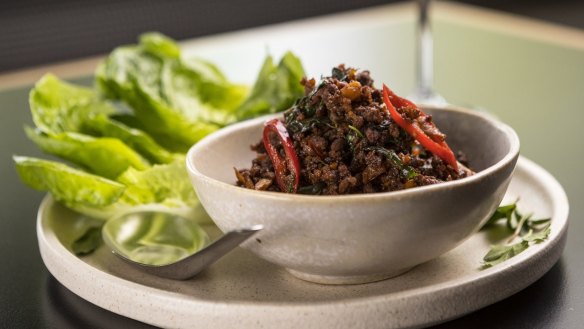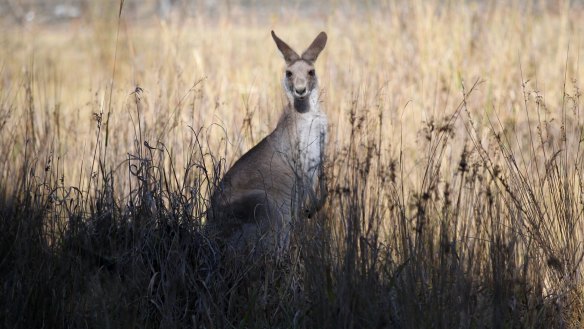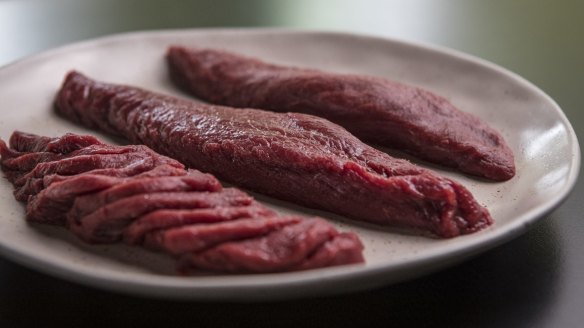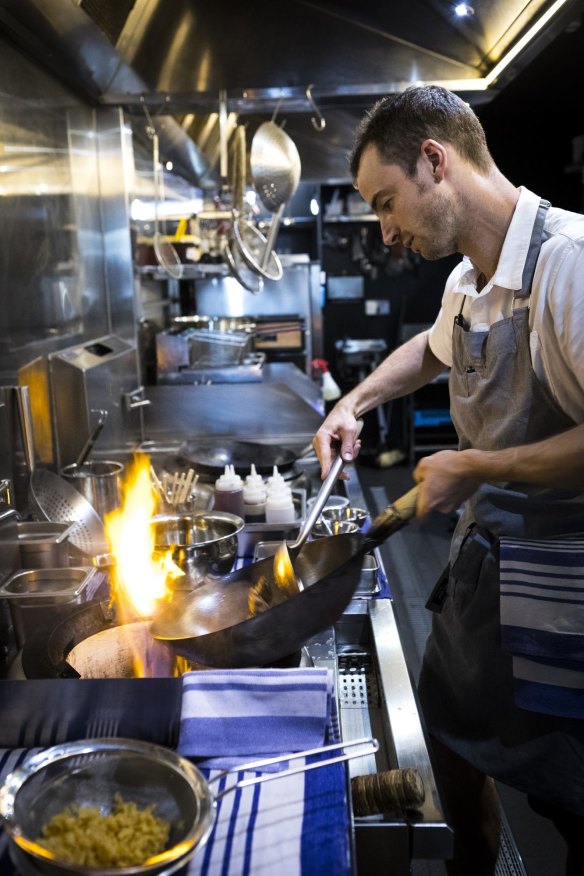Victorian kangaroos on the menu after change to state's harvest laws

It's recipe testing time at Lagoon Dining in Carlton. Ned Trumble chops kangaroo sirloin, marinates it in fish sauce and garlic, then wok-fries it before crumbling it into a lettuce cup with salted radish, soy and chilli.
The chef is happy with the flavours of his new-style san choy bao but wonders about adding richer pork to counter the lean kangaroo fillet.
"It's exciting to think about," he says. "Sourcing locally is ideal and kangaroo is no different. It would be great to see Victorian kangaroo on Victorian menus."

Currently, people who eat kangaroo meat in Victoria can be sure of one thing: it hasn't been harvested locally. Victoria is the only Australian state which traditionally hasn't allowed wild-shot kangaroo to be sold for humans.
A pet food trial has been ongoing since 2014 and kangaroos can also be killed by farmers under an Authority to Control Wildlife permit system. These so-called shoot-and-drop laws mean carcases must be left where they fall.
"A lot of protein is wasted," says Billy Staughton, co-owner of Discovered Wildfoods, which harvests venison in Victoria and is keen to add kangaroo to its roster. "It's an untapped resource."

Since the beginning of 2021, however, new laws allow kangaroos to be killed for eating under the Kangaroo Harvest Management Plan. On January 28, the government announced kill quotas for the plan across seven Victorian harvest zones.
Rather than leaving meat on the ground, farmers are now able to allow shooters access their properties to harvest kangaroos eating crops and competing with grazing animals for food.
"This program provides a service to farmers and an income to trained professional shooters," says Victorian Minister for Agriculture Mary-Anne Thomas. "The changes give more options to harvesters and processors to make use of these animals and reduce waste."

There is opposition to the changes. Legislative Council MP Andy Meddick is a member of the Animal Justice Party. "It seems the Andrews Labor Government will only be satisfied when every last kangaroo is wiped from our state," he says. "This program is not just incredibly cruel, it is unscientific."
Opponents to kangaroo harvesting often express concern over cruelty due to inaccurate shooting and orphaned joeys, who are bludgeoned if their mothers are killed. However, shooters generally target male animals. Animal extinction or endangerment is also cited as a concern, especially following bushfires.
The population estimates upon which kill quotas are based have been prepared by the Arthur Rylah Institute for Environmental Research. The institute found Victoria's kangaroo population had increased by 40 per cent since 2018, to more than 1.9 million.
Sustainable harvesting is set at 10 per cent annually so the Institute recommends a total quota of 191,200 kangaroos across both the "shoot-and-drop" (95,520) and "shoot-to-eat" (95,680) quotas.
Billy Staughton says that while kangaroos are native, their populations are far above what their natural levels would be.
"It's no longer a natural system. With vast swathes of improved pasture, irrigation and dams, the replenishing rate of kangaroos is way above what it should be. And people don't like to talk about it, but there are a lot more kangaroos that starve to death each year than are harvested."
When kangaroos are killed for food, the regulations around how they're shot, transported and butchered are elevated. Ray Borda is the National President of the Kangaroo Association of Australia and managing director of Macro Meats, which processes kangaroos in South Australia.
"We'll be moving into Victoria to make use of the kangaroos there," he says. "The more value in the animal, the more it's going to be respected. It is seen as a resource, not a pest."
Animals must be killed with a single shot to the head, hung in vehicles and stored in on-site coolrooms before being transported in refrigerated trucks. Each animal is tagged and can be traced.
Despite the new laws, there's unlikely to be a huge surge in local kangaroo in shops and restaurants. Dedicated coolrooms, costing around $80,000, need to be built in regional areas to store carcases. Abattoirs currently processing Victorian kangaroos for pet food will need to be recertified for human food.
Many consumers are still not used to eating kangaroo. Nathan Lovett, chief executive of the National Indigenous Culinary Institute, hopes that will change.
"Everyone should be eating it," he says. "The product is leaner than other meats, nutritious, tasty and easy to cook. It's a grass-fed traditional food from Australia. Provided harvest is carried out ethically, the Victorian program is a great initiative."
Restaurant reviews, news and the hottest openings served to your inbox.
Sign up